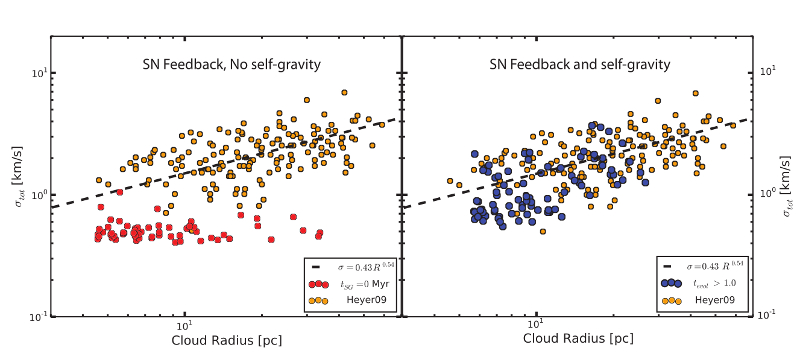| EPoS Contribution |
|
Gravity vs Supernova and the origin of the velocity dispersion in giant molecular clouds
Juan Ibanez-Mejia ITA/ZAH, Heidelberg, DE | |
| Understanding what regulates giant molecular cloud properties is vital for understanding their evolution and role in the star formation process. We implement 3D MHD numerical simulations of a kiloparsec-scale, stratified, supernova-driven interstellar medium, including gas self-gravity, diffuse heating and radiative cooling. We investigate the velocity-dispersion size relation of the simulated cloud population before and after the effects of gas self-gravity are included. Prior to the onset of self-gravity external supernova explosions alone do not drive turbulent motions consistent with the observed magnitudes within dense clouds. On the other hand, self-gravity induces non-thermal motions as gravitationally bound clouds begin to collapse, resulting in recovery of the observed relations between velocity dispersion, size, and surface density. | |
 | |
| Caption: Velocity dispersion-radius relation for the GMCs subset of the GRS survey used in Heyer et al. (2009) (yellow circles) compared to the simulated cloud population (left) before the onset of self-gravity (red circles), and (right) simulated clouds that have evolved for more than one free fall time, tevol > tSG/tff, (blue circles). The dashed line corresponds to our best fit of the Heyer09 data σ = 0.43 R0.54 km s-1. | |
| Collaborators: R S. Klessen, ITA/ZAH, FR M.-M. Mac Low, AMNH, US C. Baczynski, U St Andrews, GB |
Key publication
Suggested Session: Molecular Clouds |

